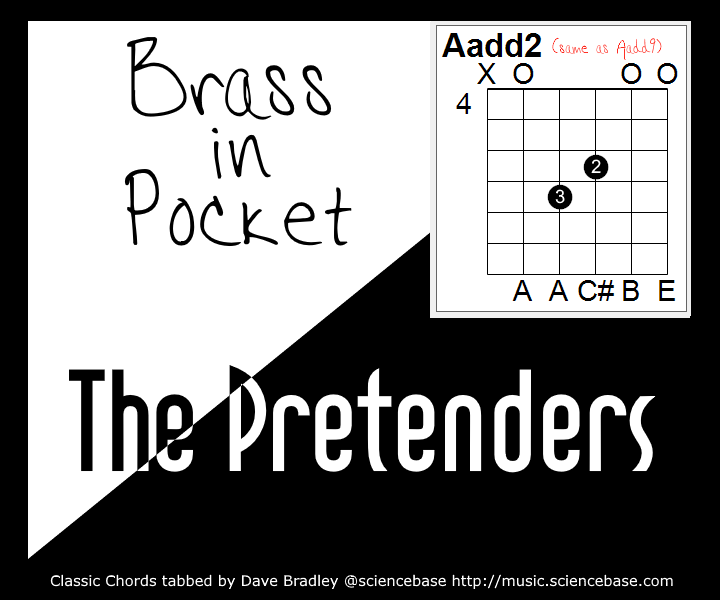UPDATE: I’ve had some Twitter debate with Richard Perkins of Bath Guitar School who half tongue-in-cheek points out that this chord might more formally be called an Aadd9. The note B is second and ninth in the scale of A major and personally, if I’d been playing a C major chord with an added D not on the second string, as in countless songs that go from Dmaj to that version of C to Gmaj, I’d have probably called it a Cadd9.
There is lots of confusion, Aadd2 = Aadd9, but Aadd2 is not Asus2 and nor is Aadd9 A9, novices hoping to expand their chord knowledge need to be aware of this. These types of chords are major triads with an added tone that isn’t a standard interval up.
The scale of A major is A, B, C#, D, E F#, G#, so the (dominant) 7th chord has the flattened 7th note (G) and the 9th chord has the 9th note (B) to be a 9th chord, whereas the Aadd9 lacks the flattened 7th and simply adds the B. One might think of it as the added 2nd rather than the added 9th if that B is closer to the root A rather than being more than an octave higher. But, there is no difference technically speaking, certainly piano players wouldn’t care in the way that we guitarists do.
Brass in pocket…it’s a song about sexual confidence, in case you hadn’t guessed, but also a reference to finding loose change in some dry cleaning. Seriously. As with contemporaries The Police, The Pretenders rose in that post-punk, new wave. It was still about the grit, but there was less spit, and the chords were a lot more mature. There’s lots of palm-muted, double stopped harmonies in here and those big jangly Rickenbacker chords with lots of chorus and reverb.
There’s also the confounding fact that Chrissie Hynde was playing rhythm to James Honeyman-Scott’s lead and there’s non-coincident voicings of the guitar chords. But, the stand out chord is not dissimilar to the Rush Hemispheres Chord but moved up to the A-major at fifth position and with not only the B and high E strings ring open but accompanied by the open A string. Of course, there’s also the suspended fourth (the D) which resonates and gives the chord progression that nostalgic 60s electric 12-string feel. Here’s a very rough attempt at getting half the sound on a single guitar.
More Classic Guitar Chords here.

